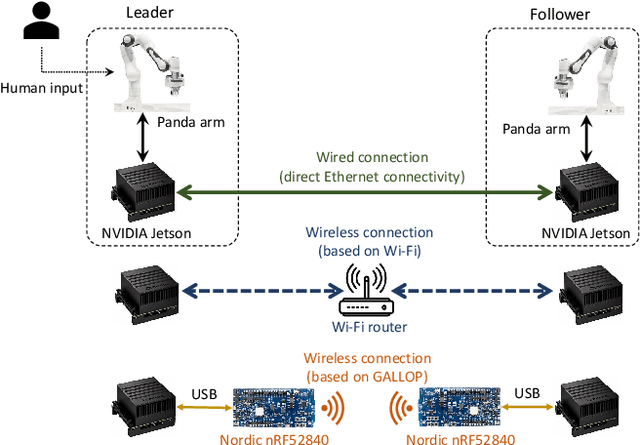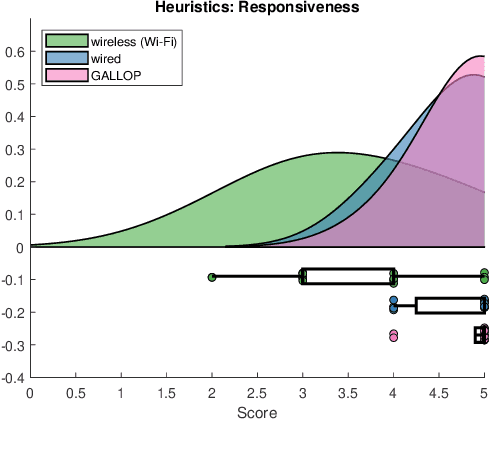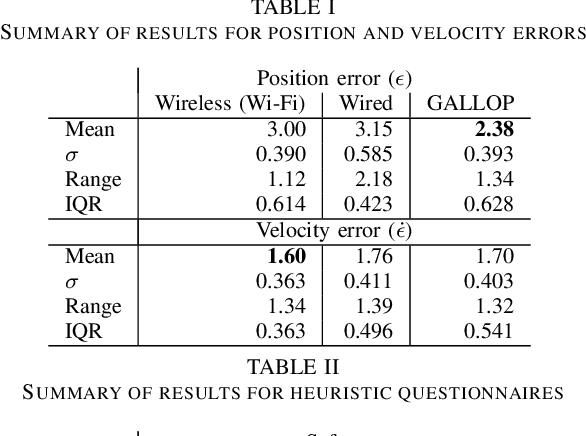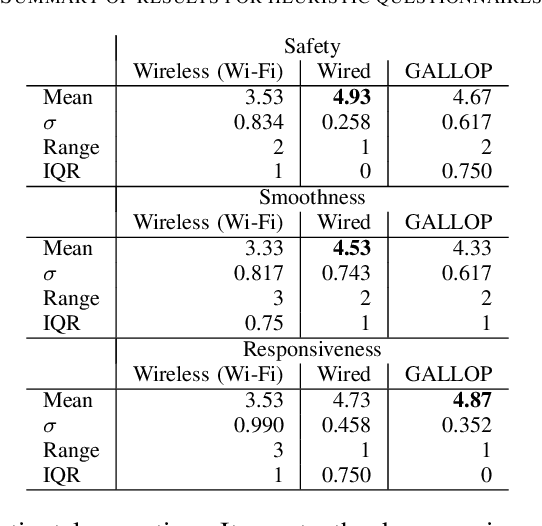Manuel Giuliani
Demo: Untethered Haptic Teleoperation for Nuclear Decommissioning using a Low-Power Wireless Control Technology
Jun 27, 2022



Abstract:Haptic teleoperation is typically realized through wired networking technologies (e.g., Ethernet) which guarantee performance of control loops closed over the communication medium, particularly in terms of latency, jitter, and reliability. This demonstration shows the capability of conducting haptic teleoperation over a novel low-power wireless control technology, called GALLOP, in a nuclear decommissioning use-case. It shows the viability of GALLOP for meeting latency, timeliness, and safety requirements of haptic teleoperation. Evaluation conducted as part of the demonstration reveals that GALLOP, which has been implemented over an off-the-shelf Bluetooth 5.0 chipset, can be a replacement for conventional wired TCP/IP connection, and outperforms WiFi-based wireless solution in same use-case.
Towards an immersive user interface for waypoint navigation of a mobile robot
Mar 28, 2020



Abstract:In this paper, we investigate the utility of head-mounted display (HMD) interfaces for navigation of mobile robots. We focus on the selection of waypoint positions for the robot, whilst maintaining an egocentric view of the robot's environment. Inspired by virtual reality (VR) gaming, we propose a target selection method that uses the 6 degrees-of-freedom tracked controllers of a commercial VR headset. This allows an operator to point to the desired target position, in the vicinity of the robot, which the robot then autonomously navigates towards. A user study (37 participants) was conducted to examine the efficacy of this control strategy when compared to direct control, both with and without a communication delay. The results of the experiment showed that participants were able to learn how to use the novel system quickly, and the majority of participants reported a preference for waypoint control. Across all recorded metrics (task performance, operator workload and usability) the proposed waypoint control interface was not significantly affected by the communication delay, in contrast to direct control. The simulated experiment indicated that a real-world implementation of the proposed interface could be effective, but also highlighted the need to manage the negative effects of HMDs - particularly VR sickness.
 Add to Chrome
Add to Chrome Add to Firefox
Add to Firefox Add to Edge
Add to Edge